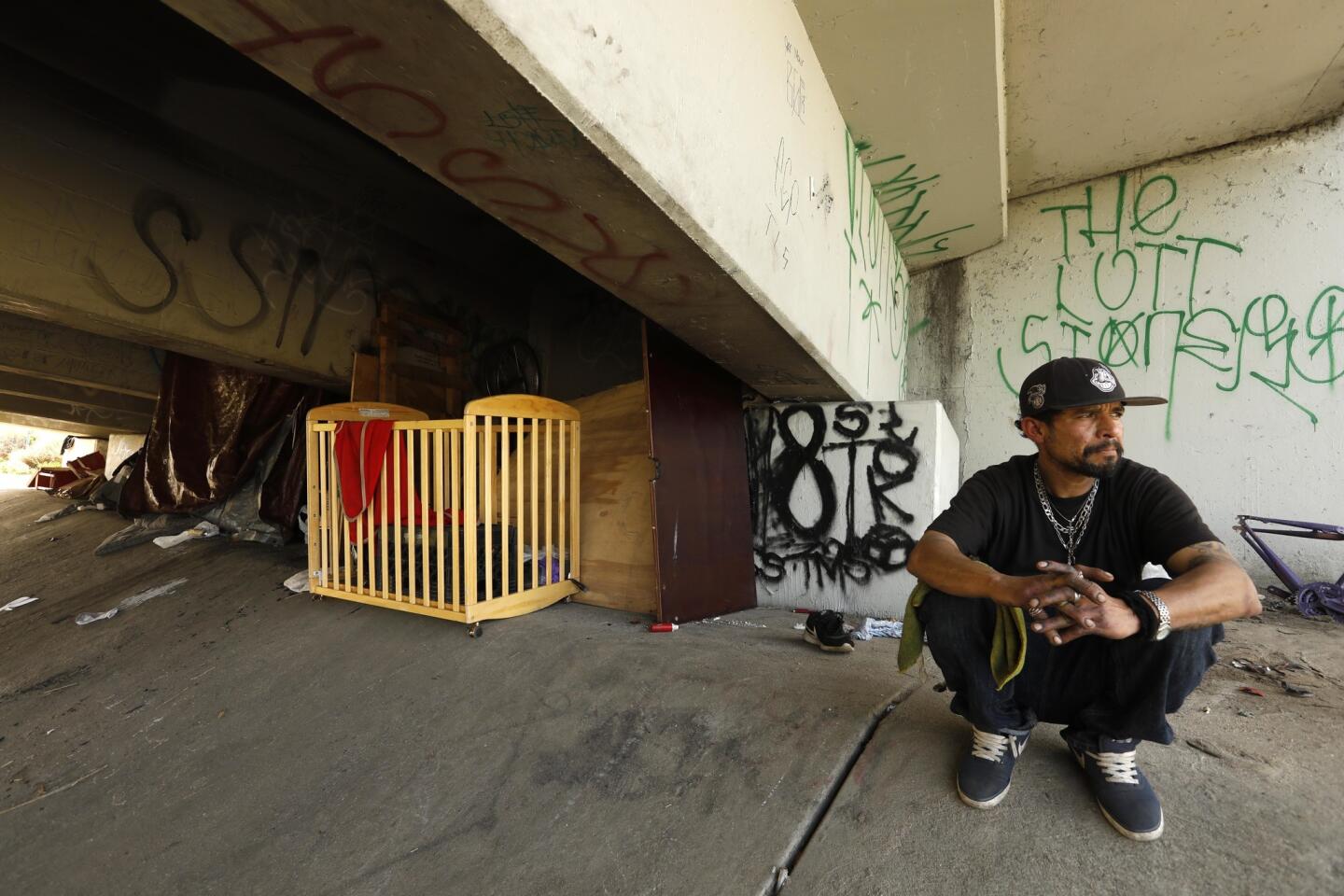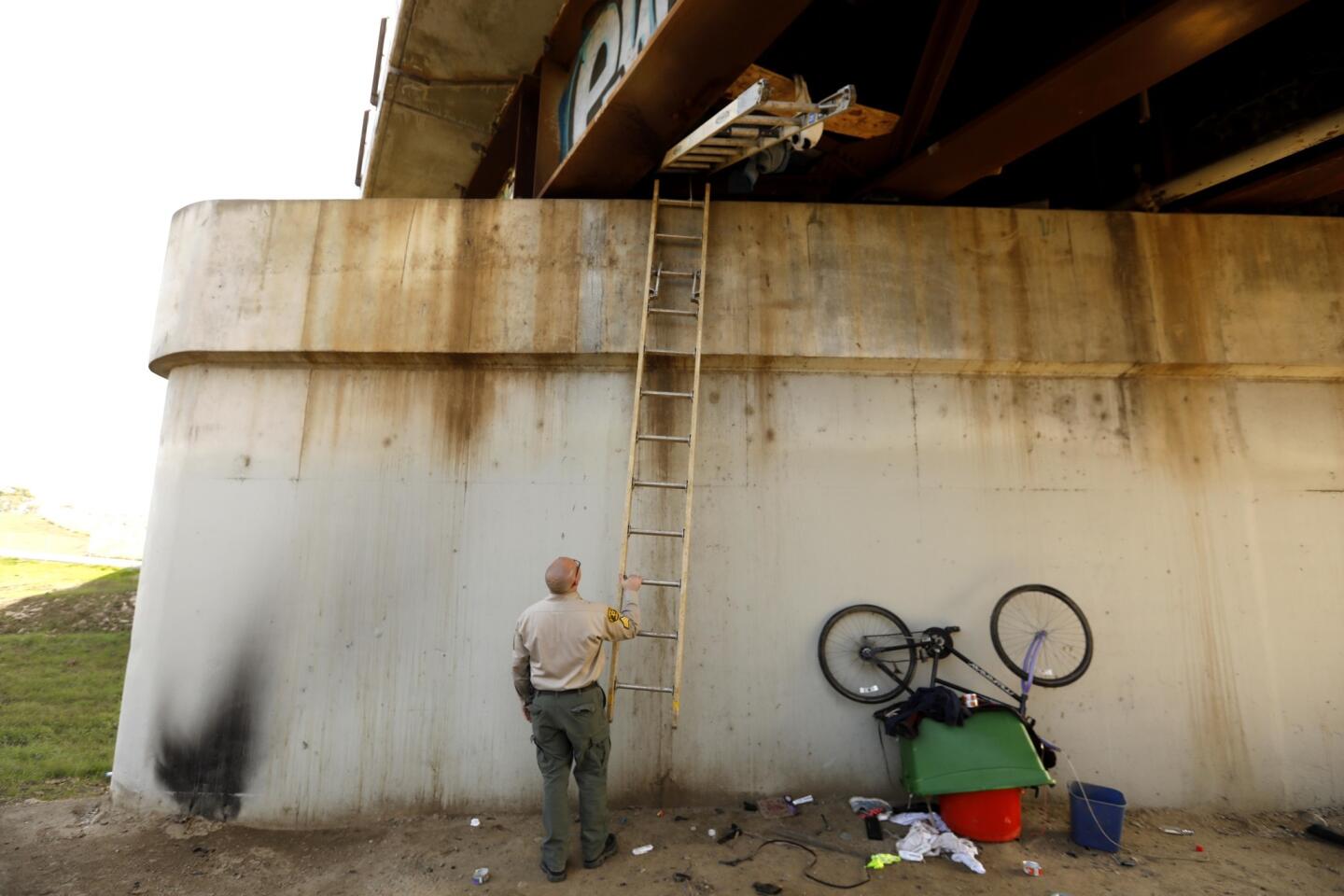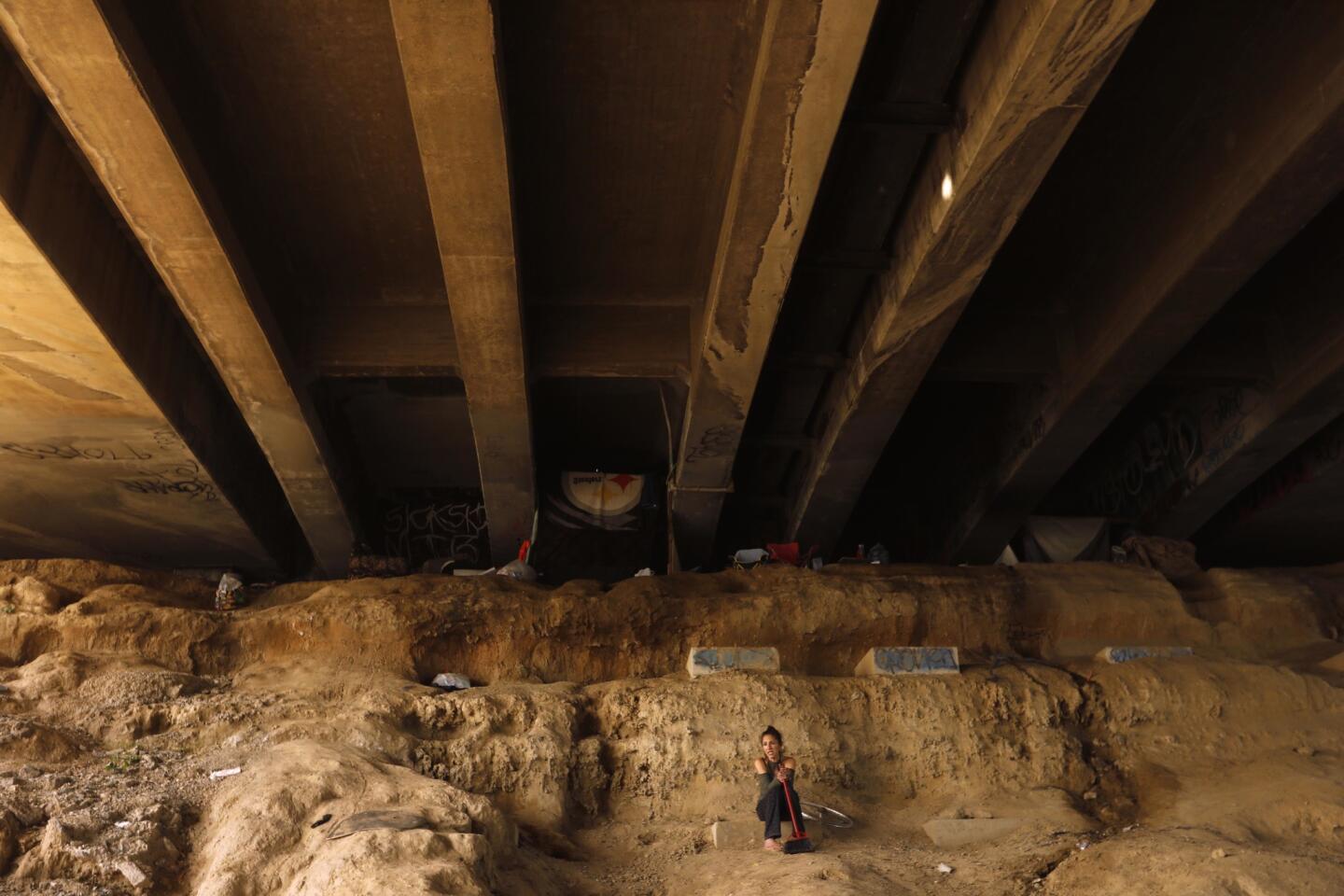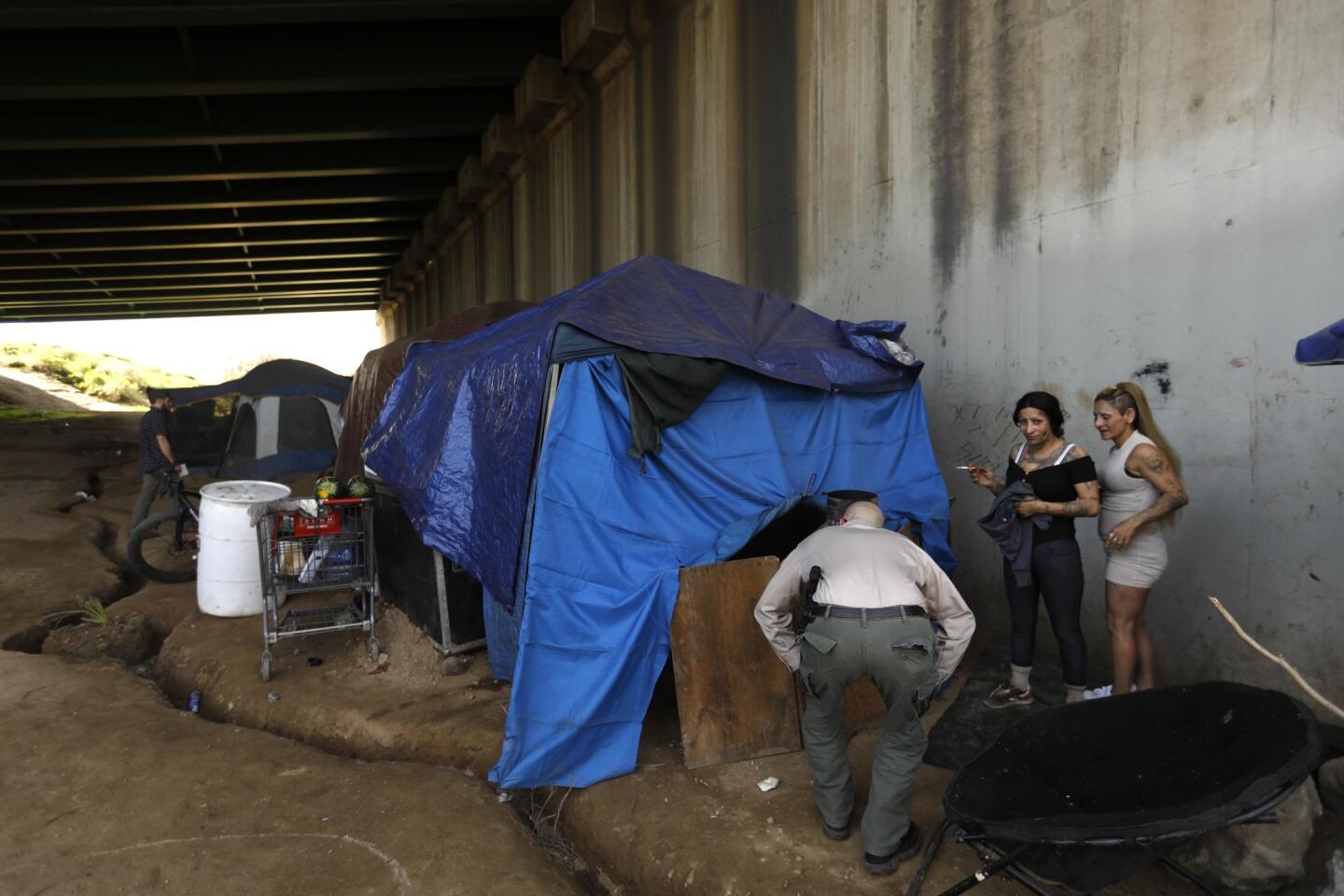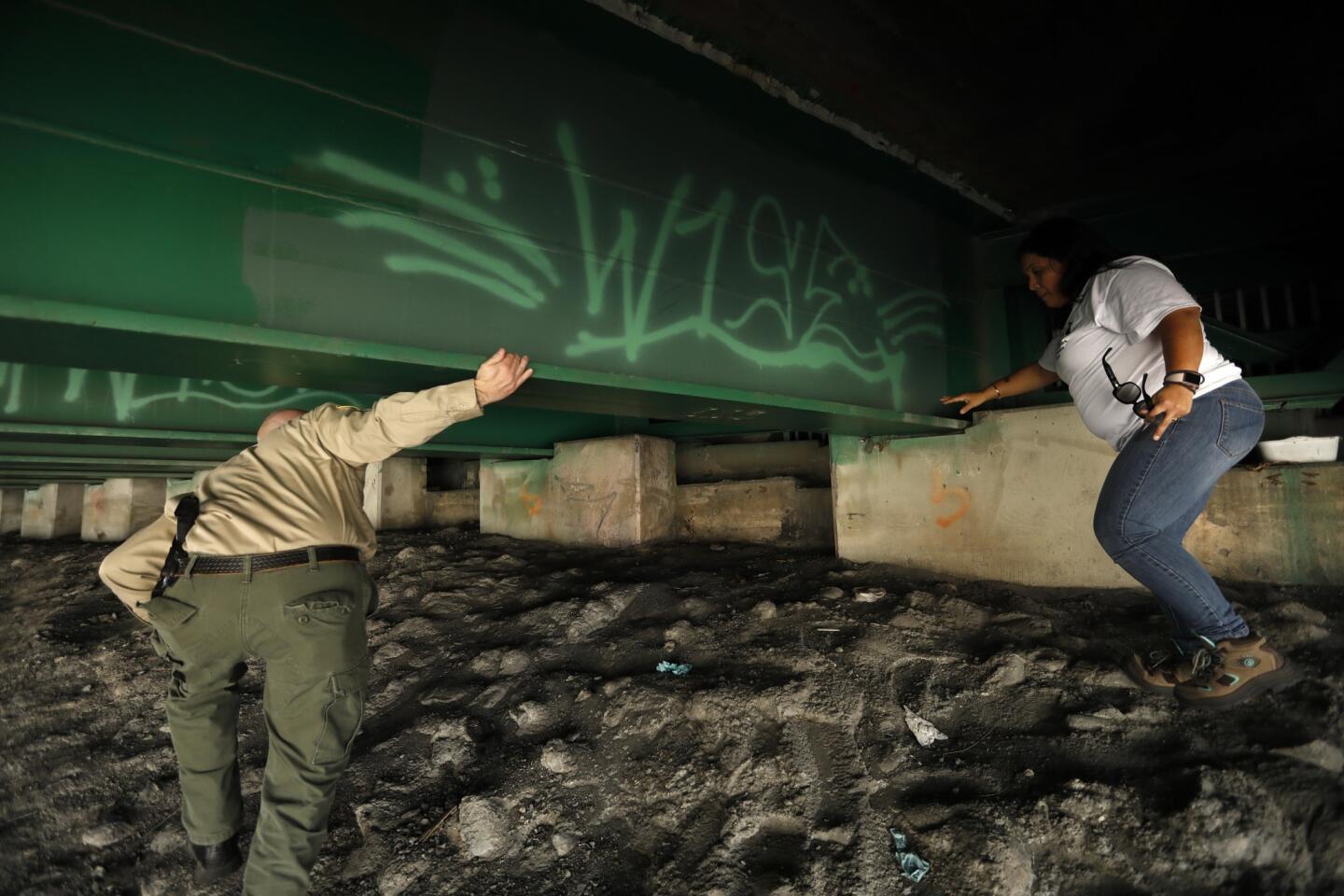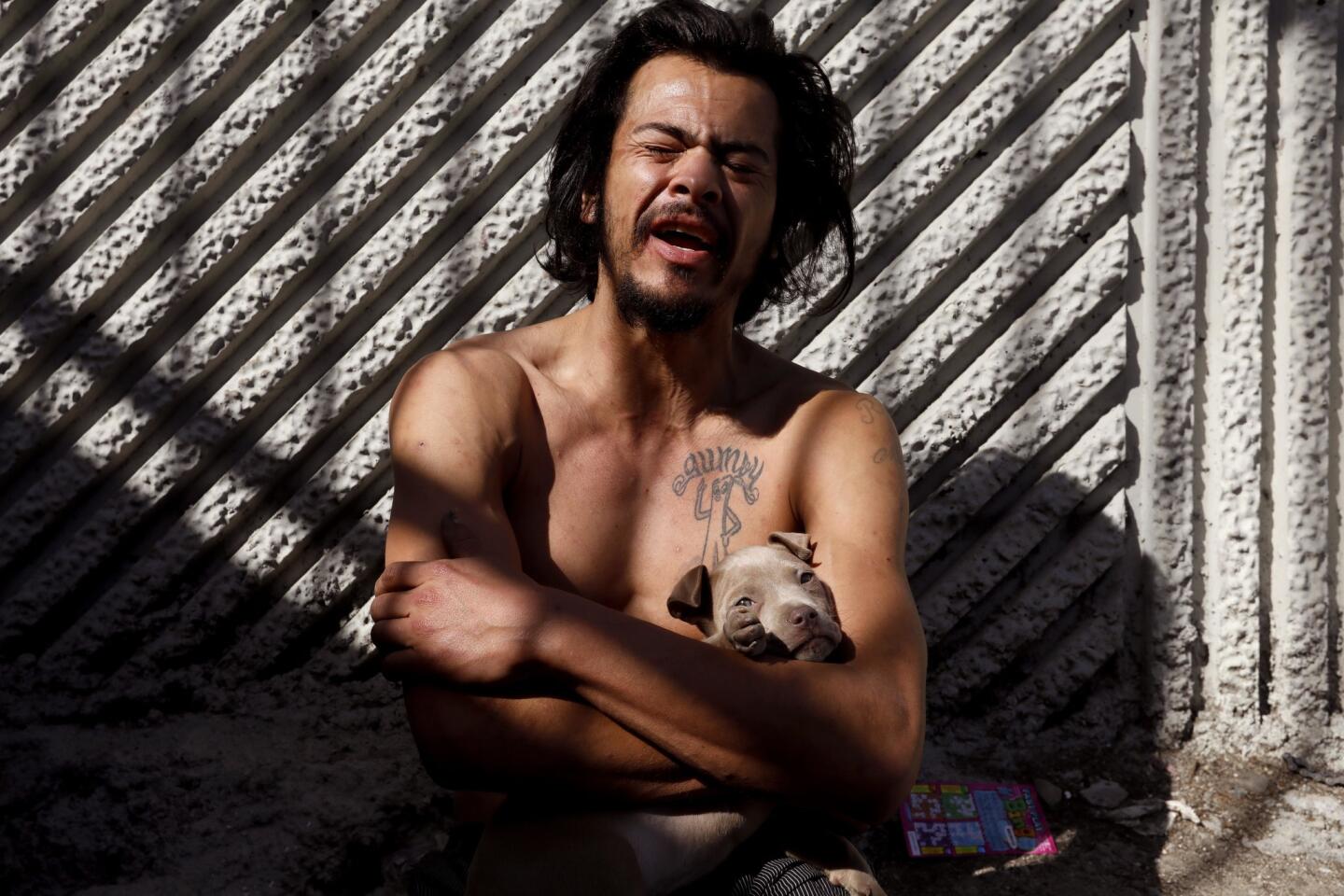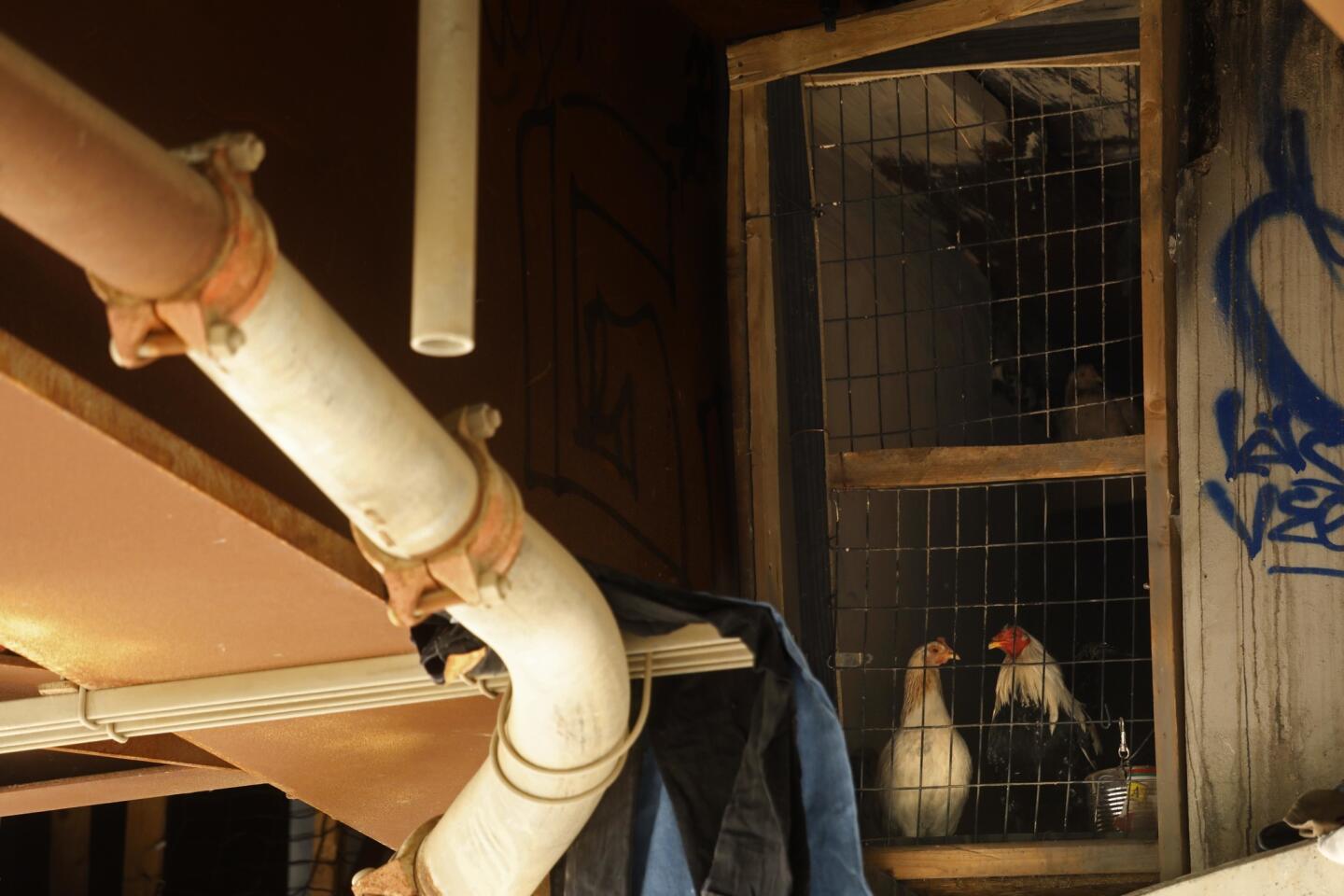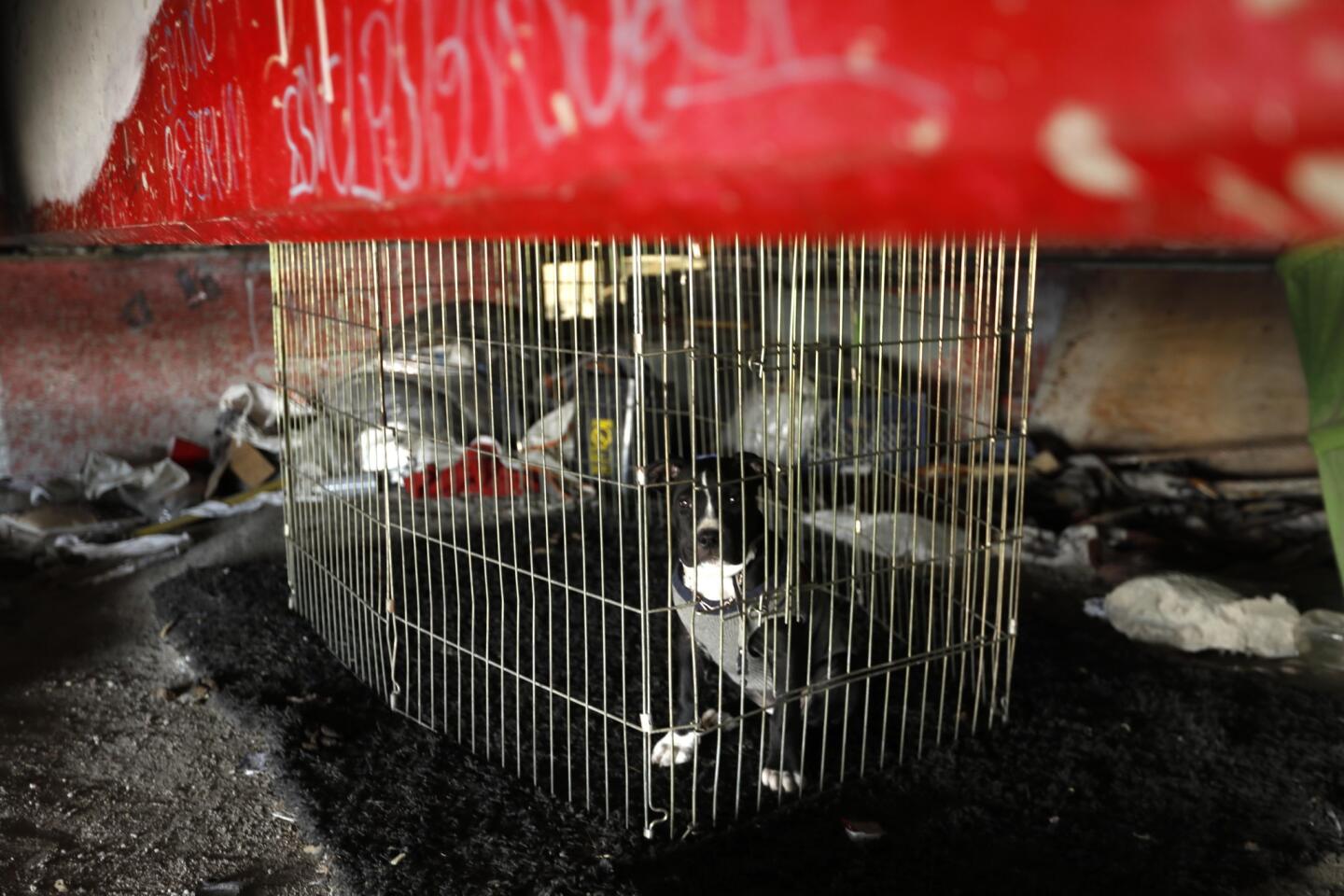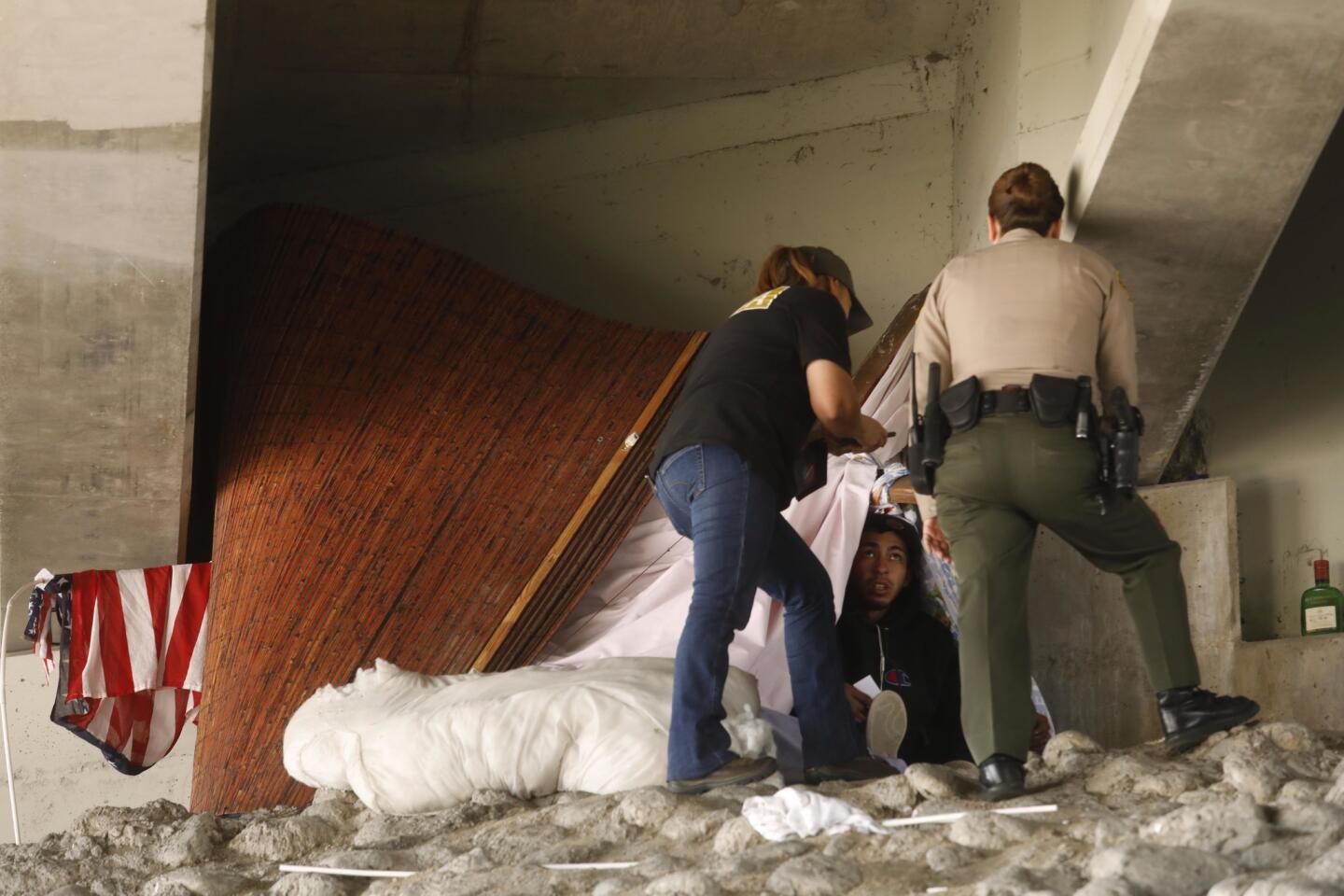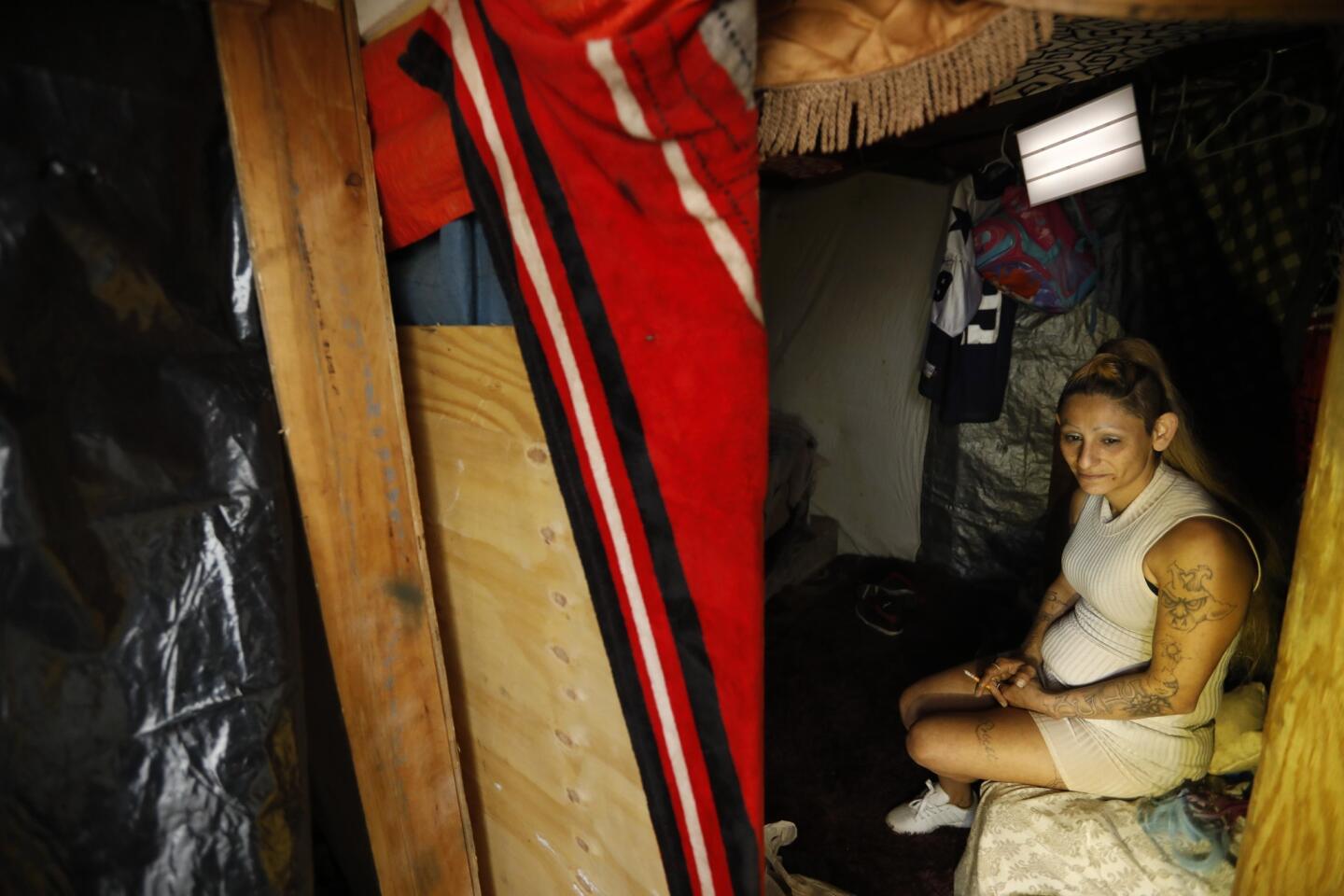L.A. homeless count: Seeking out hideaways along an urban riverbed
The annual Los Angeles homeless count has come to be defined by legions of volunteers who hit the pavement to help quantify this crisis.
But they’re not alone.
A small group of Los Angeles County sheriff’s deputies join up with outreach workers looking for homeless people in places that are hard to access or might pose a danger to volunteers.
One of these teams assembled Thursday in South Gate, near where the Rio Hondo and Los Angeles River meet. Outreach workers from the Los Angeles Homeless Services Authority and members of the sheriff’s homeless outreach services team piled into three Polarises, which look like off-road golf carts, and headed down into the concrete channel, which was largely devoid of water.
Roughly 8,000 volunteers countywide participated in the count, which began Tuesday evening and ended Thursday, inspecting the region’s 2,160 census tracts. This team focused on riverbeds and places such as gated alleyways where volunteers might be at risk.
Kimberly Barnette, the homeless authority’s outreach manager, and Sgt. William Kitchin, who leads the sheriff’s homeless outreach services team, shared a Polaris on the bumpy ride along the Rio Hondo. Most days they work together coordinating cleanups, doing outreach work and making sure the homeless are getting the help they need.
“He’s my partner. We spend too much time together,” Barnette said jokingly.
At each point where a street or train tracks cross the riverbed, Deputy Fred Nunes stopped the vehicle. He had taken 16 hours of classes in order to drive it and took great pleasure whipping it around tight turns and down steep inclines.
Barnette, Kitchin and Nunes popped out and craned their necks looking for signs of life.
Nunes unholstered his weapon and shined the flashlight connected to it into several dark corners. After one stop, Kitchin climbed up an embankment, hopped over a fence and inspected the rafters of one bridge’s underbelly. A mattress was lashed down, and Barnette counted it as a makeshift shelter.
She also counted people, and entered the totals into a smartphone application specially designed for outreach workers. That data and the thousands of paper records from volunteers are then returned to the Housing Authority and used to create statistical estimates by weighting the observations with results gleaned from a survey of homeless people.
Last year’s count found 52,765 homeless people in Los Angeles County. The numbers help determine how money is disbursed throughout the region, including $350 million in sales tax revenue generated annually from the Measure H homelessness tax, which was passed in 2017.
The sheriff’s unit was created about seven years ago when officials were worried about a particularly strong El Niño event, Kitchin said.
“We just didn’t want anyone dying in the riverbed,” he said.
It has 10 members across the county, with two assigned to each patrol division. Kitchin, who became part of the unit last year, had previously been a field sergeant in Industry and a detective in East L.A.
“Our contacts [with homeless people] don’t start with detention,” he said. “We’re trying to show that we care. That’s new for police officers to be dealing in this capacity. It’s not what we’ve been trained to deal with.”
About halfway through the count, the group came upon a row of large tents with wood-burning stoves. One had a makeshift toilet.
When the deputies began speaking with some of the residents, a man named Richard Andrande became angry, telling them how much he hated the police.
He was handcuffed, his information was run, and he was questioned briefly by Deputy Jeff Tesdahl, who explained that they were there just to protect the outreach workers and help with the count.
After that, Tesdahl let him go.
“I never had a conversation like it” with an officer, said Andrande, who said he has been to prison several times. Unlike most of the volunteers who participated in the count this week, this group stopped to talk to the homeless people they met — taking down information and scheduling times when they would come back to provide services.
As they progressed along the riverbed toward the Whittier Narrows Dam, they passed horse stables — and stopped at one point to marvel at one homeless person’s elaborate residence. He had built a ladder up into the guts of a bridge and installed chicken coops there. Roosters and hens squawked in cages as a black kitten rolled around beside them.
In one corner, high off the ground, there was also a mattress for him to sleep on.
Kitchin ordered a deputy to call animal control, and the group continued on. As the day came to a close, the group slowed to inspect one of their last encampments under a bridge. This sent several residents scrambling.
“No need to run,” one deputy blared over her vehicle’s loudspeaker. “We’re just conducting the homeless count.”
After a brief stop and chat with the people who stayed, the team pressed on.
More to Read
Sign up for Essential California
The most important California stories and recommendations in your inbox every morning.
You may occasionally receive promotional content from the Los Angeles Times.
